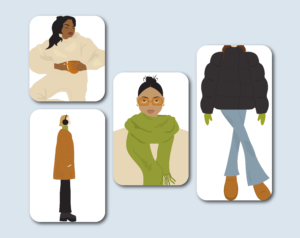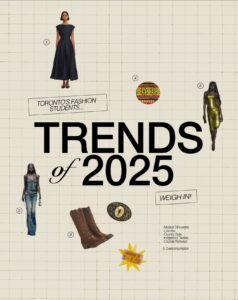GRAPHIC DESIGNER Brennan March
It’s less than a month into the all-important fourth quarter, the period responsible for the bulk of the year’s revenue, and retailers are already on the defensive. The new, ‘modified’ stage two doesn’t include mall closures, but for consumers wary of rising COVID-19 cases, it’s getting harder to find that incentive to shop.
The coronavirus pandemic has leveled our economy, and we have bigger things to worry about than new chunky knit sweaters.
This was never going to be a normal fall shopping season; the pandemic has leveled our economy, and we have bigger things to worry about than new chunky knit sweaters. Similar to what we saw in the Great Recession, consumers will stay on the path of “buying smart.”
This time around, buying smart means clothing that makes sense for remote work, a nail in the coffin to end the slow death of stilettos and Financial District dressing. Two months after the New York Times ran ‘Sweatpants Forever,’ and Esquire’s ‘The Sweatsuit Is Suddenly Looking a Whole Lot Like the Future,’ Crocs announced their projected revenue for the third quarter had increased by 10% to $344 million USD, fuelled by “exceptional customer demand.”
Shopping may not be dead, but amid widespread anxiety, consumers are keeping it casual.
Online Shopping and Managing Customer Expectations
Despite late-summer planning to lure shoppers back in store with increased sanitation efforts and new marketing campaigns, the second wave is forcing retailers to pivot only weeks away from the holiday season, and in some cases, speed up the calendar.
Online shopping in Canada, already reported to have doubled since the pandemic began, shows no sign of stopping; In an Oct. 8 news release, Canada Post urged Canadians to shop early for Christmas gifts, with the expectation that 48% of customers will choose to shop online.
Choosing whether or not to embrace the ‘phygital’ approach, one that emphasizes a unified customer experience, is no longer an option for apparel and lifestyle retailers.
The pandemic is forcing retailers to accelerate plans to improve their e-commerce offerings. The priority should be optimizing online shopping, and integrating it with their in-store service. Choosing whether or not to embrace the ‘phygital’ approach, one that emphasizes a unified customer experience, is no longer an option for apparel and lifestyle retailers; flexibility in shipping options and return/exchange policies will give customers the reassurance they need to buy, as families cut down on household spending.
Personalized shopping, once a novelty in the luxury sector, could become a widely adopted feature to lure customers back in store; Indigo Books and Music, dependent on the holidays, is putting their hope in private shopping hours to resuscitate sales revenue.
The ‘New’ Holiday Season
This year won’t be about lavish gift-giving. Black Friday is the unofficial start to Christmas, but facing a holiday season without holiday parties, and an unemployment rate of 9%, retailers such as the Hudson’s Bay and Nordstrom are banking on starting the season weeks earlier, giving customers more time to shop the Christmas sales and spread out their purchases.
Amazon Prime Day, usually a summer sales event but since moved to Oct.13-14, has pressured rivals such as Walmart to start select winter sales up to two weeks before Halloween. Running the risk of consumer fatigue, this all but ensures that the new holiday season is going to drag as long as possible, ready to squeeze out every last dollar.
The state of fall shopping looks a lot like the state of the country – not as stable as you’d like it to be. Shoppers and retailers alike are looking forward to 2021, but the pandemic’s impact on consumer spending, and retail as a whole, will outlast the worst of COVID-19. If retailers want to survive what’s taken down everyone from Garage to Neiman Marcus, they need to double down on efficiency and work two steps ahead; it isn’t enough to look at what customers want, they need to focus on how they want it, and make it even faster.


























